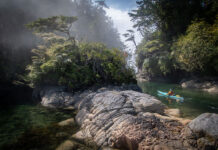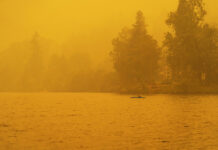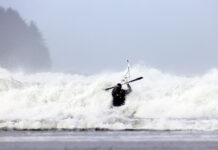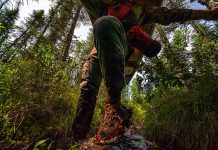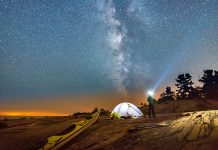Between May and September, I live in the sweetest place in the world. That’s when the Aleutian Low system gets displaced by the North Pacific High, a subtropical high-pressure anticyclone pushing northeast from Hawaii towards the west coast of North America. It happily shoves the Aleutian Low system and its winter cold back where it belongs in the Gulf of Alaska. The result is the best summer paddling season in the world.
What the summer season’s new normal means for paddlers
Long summer days are warm but not sweltering; predictable northwesterlies give me wind waves to surf until I’m silly with laughter, or I can avoid the wind by paddling in the morning. Northwest summer swell lets me poke out into the Pacific by launching in the protective arc of the Oregon coast’s rocky headlands.
Another summer bonus: the northwest doesn’t have much of a bug problem. My Alaskan friends have stories of chemical warfare and suits of meshy armor against mosquitoes and blackflies. Bug dope is seldom even in my kit.
When it gets hot, I have a 300-mile zone of air conditioning an hour to the west—the Oregon Coast—or 45 minutes east, the icy Cascade volcanos. Sure, there’s the odd week of Juneuary, when it’s cold enough to wear a fleece top with your shorts, but that’s a small cross to bear. Summer is perfect here.
Or, at least, it used to be. Now summer sucks.
Why?
In a warming world, plans are up in the air
Last year the coastal air conditioner ceased to function. A heat dome came to the Pacific Northwest. Portland temperatures hit 114°F. It was 10 degrees warmer than Saudi Arabia was that day. Like everyone else, we fled to the coast—only to find it in the mid 90’s with no wind. We paddled to cool off, rolling and swimming, but the ocean breeze was still too hot for comfort.
The year before, it was toxic air. Not with pollution but smoke. Drought and a weird weather pattern led to huge wildfires in ordinarily green and soggy western Oregon and even on the coast. The air filled with smoke for a week, and we huddled inside with HEPA filters while the news cautioned everyone to stay put instead of seeking cleaner air elsewhere, because it was nasty in the whole region. Lush, green, damp, mossy places I’ve loved, paddled and hiked all my adult life, like Opal Creek, Santiam Canyon and the Clackamas River, burned. And unlike the Columbia Gorge fires of 2017, this wasn’t caused by a bonehead with a firecracker. It was just the weather.
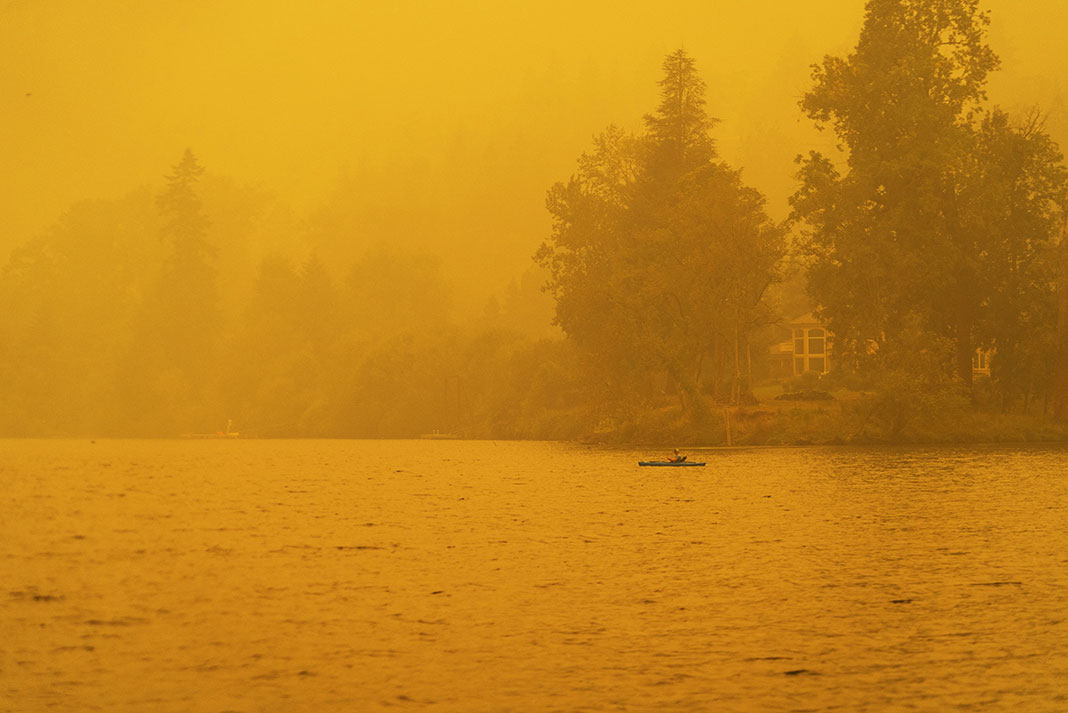
Going from a summer paradise to a dystopian barbeque happened because the North Pacific Ocean has warmed up. The result is the previously awesome North Pacific High became a Ridiculously Resilient Ridge (I’m not making this name up, it comes from the journal Geophysical Research). The RRR, as meteorology nerds call it, blocked the midlatitude westerlies and turned my summer heaven into a bit more like, well, you know. Now I’m doing what I did growing up in the humid Northeast: seeking out air conditioning that doesn’t exist around here.
And to further complicate matters…
That’s one part of what ruined summer. The other culprit is a single strand of RNA with protein spikes. Yup, Covid. In early Covid, it was easy to stay six feet away from everyone in my 17-foot sea kayak. Now the outdoors is mobbed.
Finding a campsite means being at your computer, ready to hit reserve at precisely 7 a.m. six months ahead, and competing with bots snatching up all the sites. I now need reservations to park in the outdoors in a lot of places, let alone camp or run a river. Closures from wildfires also funnel more people into fewer places. As a conservationist who has spent my career encouraging people to love and protect the outdoors, it’s great. As someone who wants to go kayak camping, it’s not.
But when wildfires and crowds come to a green, mossy, wet state with a low population, the writing is on the wall. So, what to do about it?
Spring is the new summer. This year it was desert camping. Last year, I took a 144-mile headwaters-to-sea journey down my home river. I don’t get the long summer days. But it beats breathing smoke, melting heat and battling crowds. I do feel like the proverbial frog in the slowly boiling water, feeling my favorite season become not-so-favorite anymore. When will it become intolerable?
Some folks will roll their eyes, thinking, “Welcome to the club.” California and the mountain west have dealt with summer wildfires for decades. Last August, fires also evacuated the Boundary Waters Canoe Area Wilderness in Minnesota, as if the mosquito serving as the state bird wasn’t bad enough. When wildfires and crowds come to a green, mossy, wet state with a low population, the writing is on the wall. So, what to do about it?
Crowds are the easiest to negotiate a detente with. Last weekend my girlfriend announced with glee she’d found an out-of-the-way hike with nobody on it along a creek, 30 minutes from town. We guard these secret oases like nuclear codes. We time weekend excursions to miss the worst of the crowds. I know a bunch of islands that aren’t much traveled and where camping is still free, unpermitted and primitive—and you won’t pry the location out of me with a crowbar.
Hopefully, Covid vaccines and treatments will send some of the crowds back to their music festivals, museums and sporting events.
If they don’t, I’m ready.
Where we paddle might have to change
Before, decades ago, I started working a compressed schedule so I could bust out of town on Thursday evening ahead of the mayhem. Rough water paddling skills get me to beaches that wouldn’t be crowded even if they were advertised on billboards. When a friend urged me to write a kayak guidebook for the region, I passed—I don’t want my favorite spots advertised.
Climate is tougher. The Pacific Northwest is one of the places people are expected to migrate to as change hits drier and lower places first and worst.
The good news is that even when the snowpack drops, our big rivers, including the Columbia, Willamette, Frazier and Skagit, not to mention Puget Sound and the Pacific Ocean—will still have water in them. Glacial-fed whitewater runs will continue for a while, but eventually whitewater boaters may migrate to the coast to play the sea for an adrenaline fix if that Ridiculously Resilient Ridge keeps doing its thing.
When it gets really bad with heat and smoke, I’ve got some remote foggy islands to head to—and I’ll be a day ahead of you. If you’re a true doomsayer, you could go Elon Musk-level crazy and head for Mars. But I hear the paddling there is even worse.
Neil Schulman leads an environmental non-profit in Portland, Oregon. He melts above 85 degrees.
Summer, you’ve changed. | Feature photo: Christian Gallagher



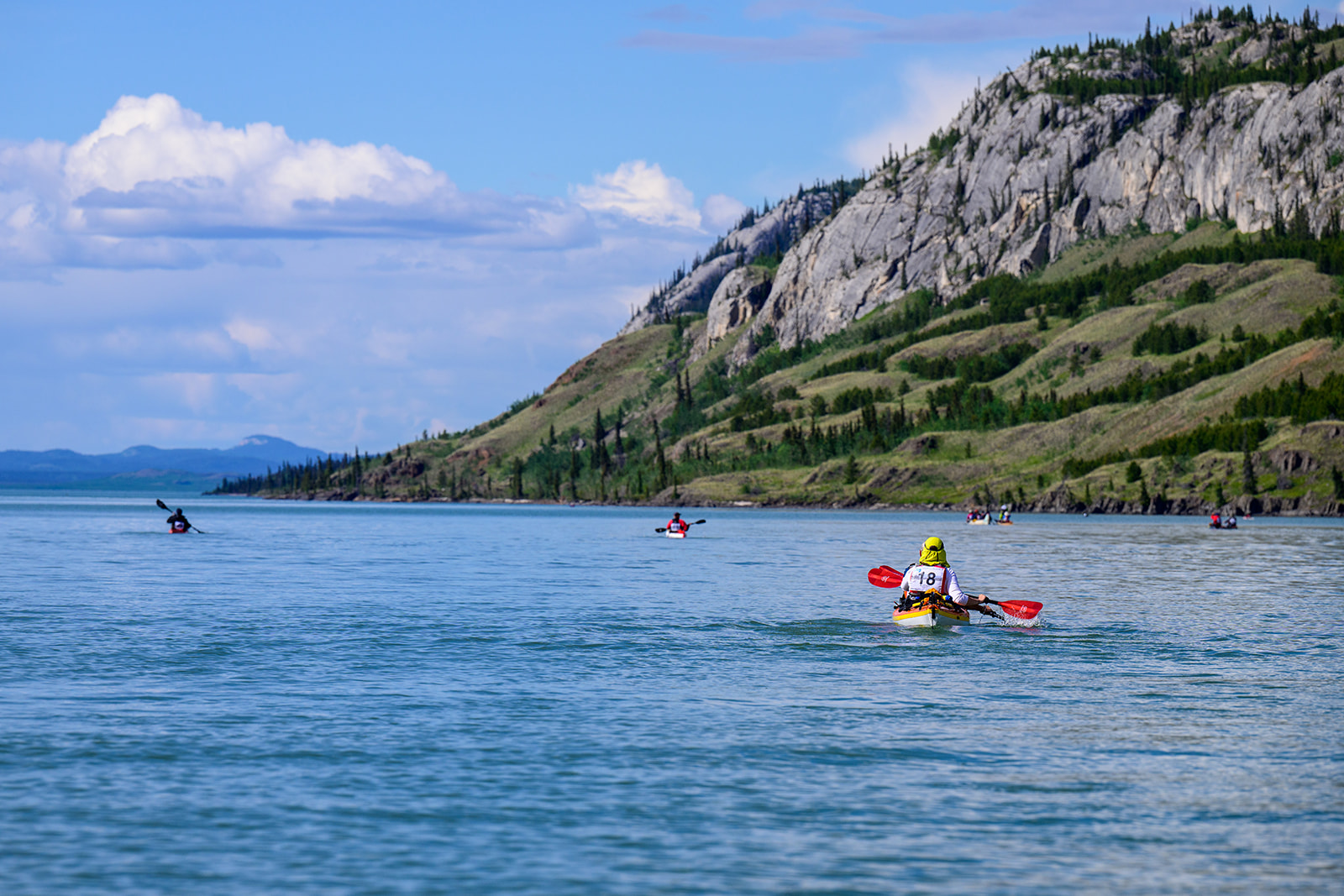

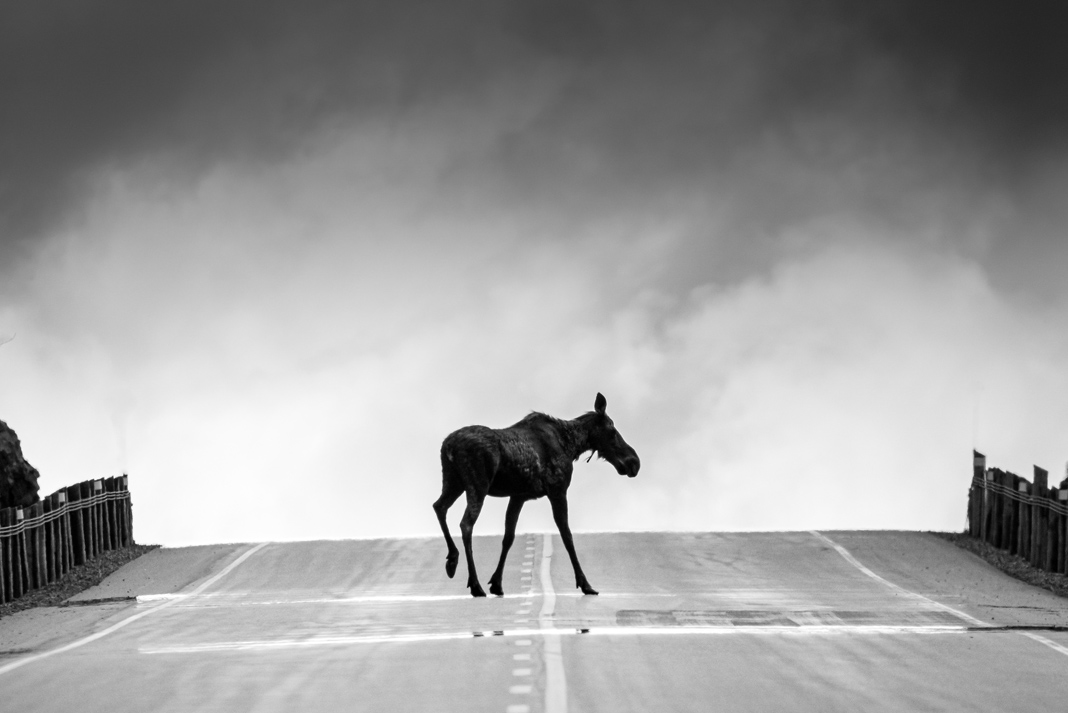
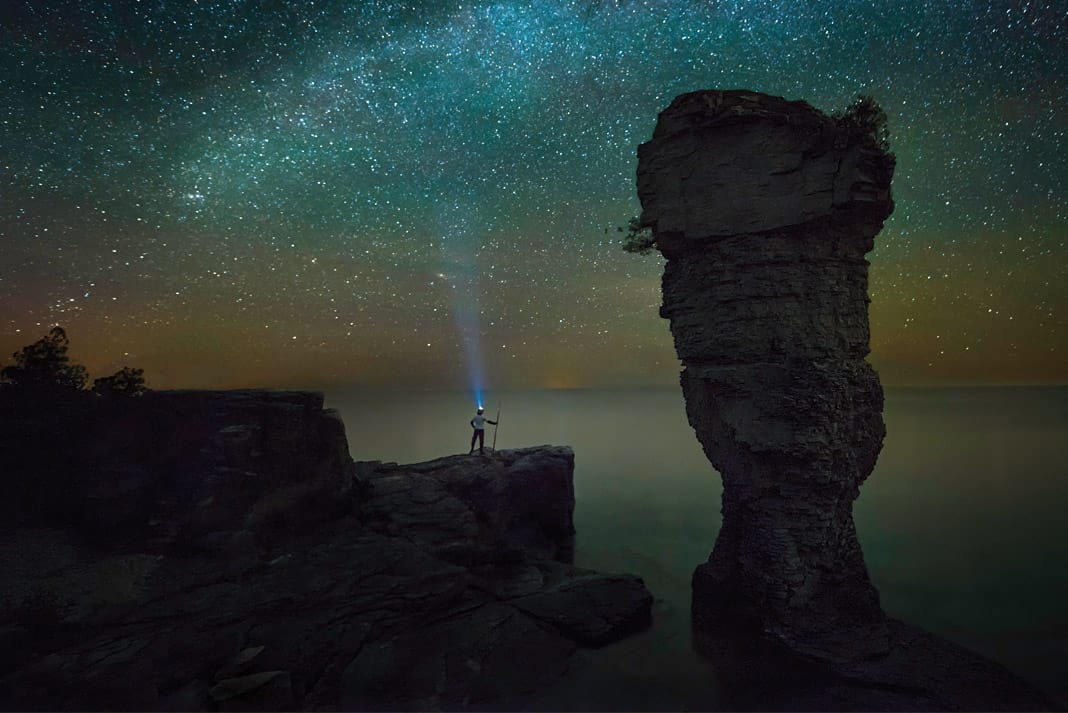
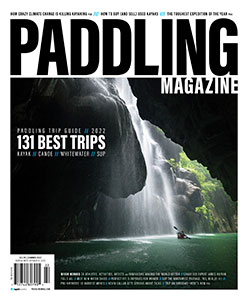 This article was first published in the Summer 2022 issue of Paddling Magazine.
This article was first published in the Summer 2022 issue of Paddling Magazine. 